LastPass’ history of data breaches makes it hard to suggest as a viable password manager in 2023. However, for those who wish to try LastPass, this article shows you how to set it up and enhance its available features.
Jump to:
Featured Partners: Password Management Software
How to set up and use LastPass
1. select a LastPass subscription
LastPass has two categories for its subscriptions: Single Users & Families and Business.

For the Single Users & Families plans, you can select between Free, Premium and Families. If you only need a basic password manager, LastPass Free allows for unlimited password storage and comes with a password generator.
However, with the free version, you miss out on important features such as advanced multifactor options, emergency access and unlimited device access that are only offered with the Premium strategize.
If you’re a group or a family that wants a centralized password management solution, LastPass Families may be better for you as it covers up to six users.
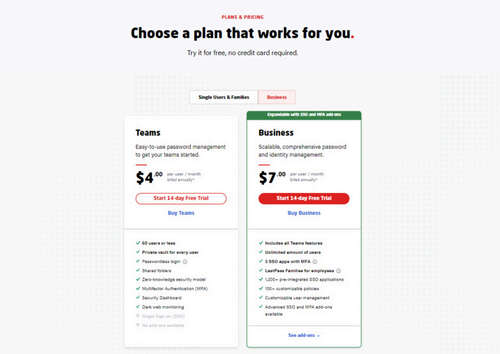
Businesses can opt for either LastPass Teams or LastPass Business. Teams covers up to 50 users, while Business is tailored toward larger organizations. These two plans supply more business-centered features, such as shared folders and an administrative console.
Fortunately, LastPass offers generous free trials for both categories. In particular, LastPass Premium and Families has a 30-day trial, while LastPass Teams and Business has a 14-day trial.
I suggest going for one of these free trials, depending on your needs. The good news is that LastPass doesn’t necessitate users to supply any payment information to access any of these free trials. For this article, I used LastPass Premium’s 30-day free trial.
To access one of the free trials, simply click the “Try” button below your subscription of choice.
2. Set up the web app and the browser extension
Upon selecting a strategize, you’ll be redirected to create your LastPass account. Here, LastPass will ask you to supply an email address and your master password.
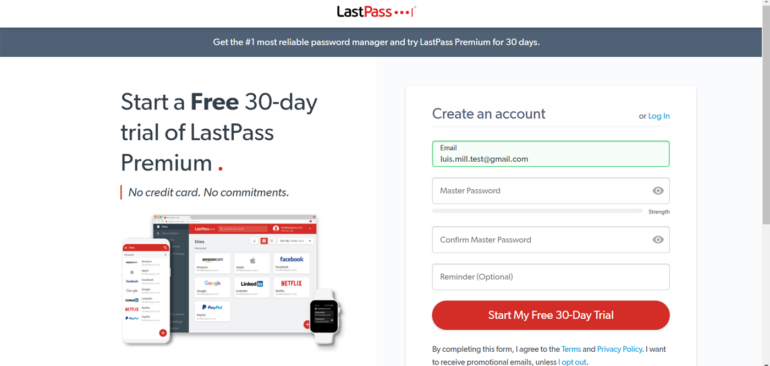
In theory, your master password is going to be the only password you’ll have to create on your own. It’s also arguably your most important password, as it serves as the key that unlocks your vault, which contains all your other passwords and credentials. Thus, it’s crucial that you recall your master password.
After you’ve finished creating your account, LastPass will ask you to install its browser extension. This is the main way you’ll communicate with the service. I use Google Chrome, so LastPass redirected me to the Chrome Web Store.
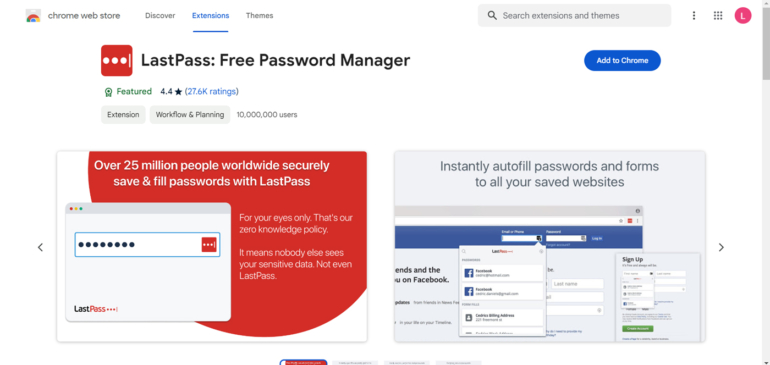
Once you’ve installed the browser extension, you can access LastPass’ web vault application. Before you do this, I suggest you pin the LastPass extension to your browser’s toolbar for easy access.
Now that you have the extension up and running, it’s time to access your LastPass web vault. To access it, go to the official LastPass website and click Log In. From there, enter your email and master password and you will be led to the LastPass web vault application.
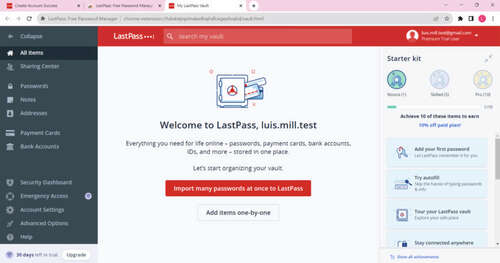
Your LastPass vault is where all your passwords, logins and other credentials will be stored.
3. Use LastPass
The main reason to use a password manager is to organize and safeguard your passwords. To represent how to do this, I’ve made a new account on LinkedIn.
On LinkedIn’s signup page, you will see that there’s a LastPass icon on the username and password fields.
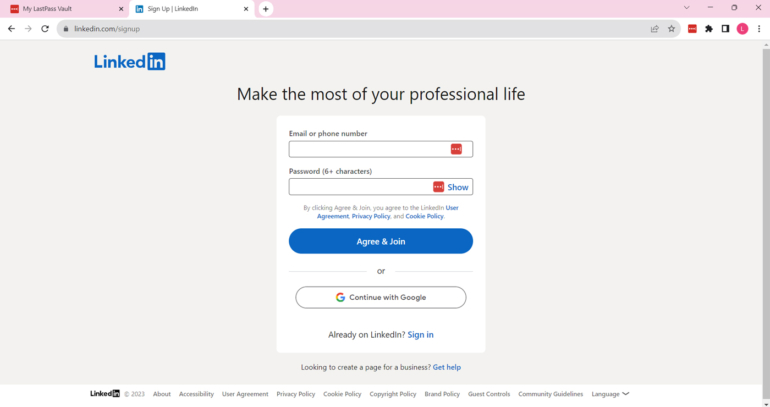
Clicking on the LastPass icon in the password field will bring up LastPass’ password generator. Here, LastPass automatically generates a random password for your new login.
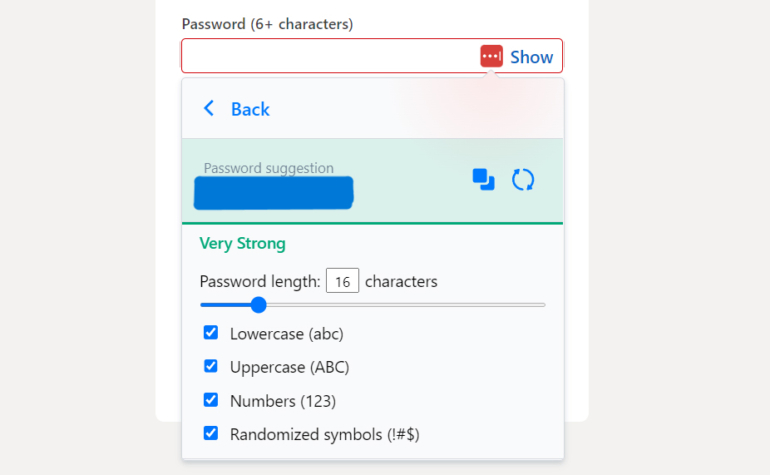
At default, LastPass will create a 16-character password — which you can configure to have uppercase and lowercase letters, numbers and symbols. LastPass allows you to create a password with as many as 99 characters. In this case, I selected the first suggestion from LastPass’ password generator.
Clicking on the generated password will prompt LastPass to ask you if you want to save the new login. Click “Add password,” and there you go — you’ve just created and saved your very first LastPass login.
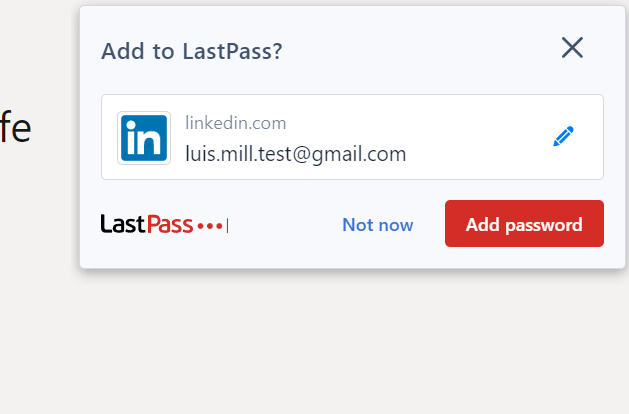
This login can now be found within your vault and LastPass will automatically be filled in the next time you’re on LinkedIn’s login page.
Now that you’ve saved your first login, I highly suggest you take a few housekeeping measures that will help keep your data safeguard.
- Set up multi-factor authentication: This gives your vault an additional layer of security as it will necessitate a second factor, such as a code, before any access to your data is allowed.
To set this up, go to Account Settings → Multifactor Options. There, you can select from numerous second factor options that LastPass provides. The simplest one would be using the LastPass Authenticator app that you can download on your iOS or Android device.
- Designate trusted contacts: LastPass allows users to select trusted contacts via their Emergency Access feature. Designated contacts will be able to access your accounts and safeguard documents, such as healthcare or financial information, in the event of an emergency.
To select your trusted contacts, you can go to the LastPass web app → View the sidebar on the left → Click on Emergency Access → Press on the + button at the bottom.
If you confront any issues with LastPass, you can go to its official uphold page, which houses an extensive collection of guides and documentation. You can also inquire a live phone call with LastPass representatives or open a uphold case or ticket through its uphold page.
LastPass also has a dedicated community forum that houses discussions from both LastPass moderators and customers.
Best ways to use LastPass for your business
Aside from password storage, password generation and autofilling, there are a few interesting ways you can use LastPass.
Accessing LastPass remotely via temporary passwords
LastPass allows users to create one-time passwords that serve as temporary passwords that grant users one-time access to their LastPass vault. These OTPs can be used instead of the master password whenever you need to access your vault away from your usual device.
This can be handy for customers or businesses when they need to access their vaults in public internet cafes or on a hotel computer, as it prevents keyloggers or malware from stealing their master password.
Setting country restrictions for safe travel
LastPass also comes with a Country Restriction feature, allowing users to restrict LastPass logins only within certain countries.
This is a nifty feature that frequent travelers will find useful, especially if they’re concerned about bad actors digging through their LastPass vaults when they’re on the road.
Keep in mind that using a virtual private network changes your virtual location on your device, so be sure to check if your chosen VPN server aligns with your selected country restrictions.
Utilizing LastPass’ dark web monitor
LastPass’s dark web monitor allows users to continuously monitor email addresses for any involvement in data breaches or suspicious activity on the dark web. Once you set an email address you want monitored, LastPass will supply you with an initial report of its security and will then proactively alert you of any future breach it may be involved in.
Users or business owners can utilize this to make sure that none of their emails or accounts are compromised.
See my full review of LastPass here.
How to ensure you’re maximizing LastPass capabilities
While LastPass comes with a decent password management experience, there are a few things you need to know to enhance your security, given its controversial history of data breaches.
- Read up on LastPass’ recent security breaches to make sure you know the risks of using LastPass. Its recent data breaches make it hard to suggest in terms of overall security, but if you have specific reasons to use LastPass, knowing the circumstances of these breaches will help you pilot the risks. I suggest reading my full LastPass review for more information.
- Have a separate password manager for crucial data so that your most important information isn’t in danger of being compromised. If you must use LastPass, it may be prudent to have another password manager, such as 1Password or Keeper, store your most sensitive data and have LastPass as a secondary service instead.
- Keep yourself updated with LastPass’ official blog to have the latest news on its security incidents and best practices moving forward. There, you can find official updates from LastPass representatives on the actions they’ve taken regarding the recent breaches and what customers can do to better protect their data.
Recommended alternative password managers
Given LastPass’ less than ideal security history, I suggest trying out three other password managers that have yet to experience any data breaches to date. These are Keeper, 1Password and Bitwarden.

Keeper
Keeper is a great option for businesses of all sizes. For smaller teams, it offers a Business Starter subscription that covers up to 10 people. It also has an Enterprise strategize that can supply customized bundles and curated pricing for larger companies and corporations.
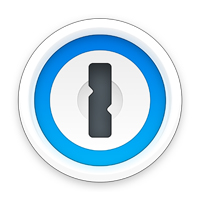
1Password
If you’re a single user and want an all-around experience, 1Password is a good choice. It has a well-designed application that’s easy to use and consistent across desktop and mobile platforms. It also comes with top-level security that’s built on military grade AES 256-bit encryption.

Bitwarden
For those on a budget, Bitwarden presents really good value. Its free version offers unlimited password storage and use on an unlimited number of devices. Its premium subscription for a single user at less than $1 is also much more affordable compared to similar plans from competitors that range from $2-$4 per month.

